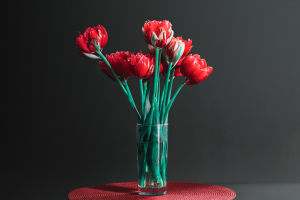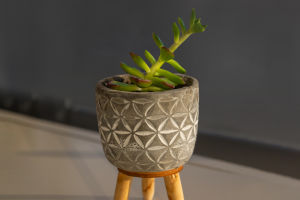Violet Lilac Symbolism
Lilacs have long been admired for their delicate beauty and enchanting fragrance.
Among the various hues of lilacs, the violet lilac holds a particularly special place.
Not only does this flower captivate with its striking color, but it also carries deep symbolic meanings that have transcended cultures and centuries. Let's explore the meanings associated with violet lilacs and how this charming flower continues to resonate with people around the world.
1. Symbol of First Love and Innocence
The violet lilac is often associated with the theme of first love and innocence. This symbolism likely stems from the flower’s gentle, soft color, which reflects feelings of purity and tender affection. In Victorian times, flowers were often used as symbols in the “language of flowers” to convey emotions that were otherwise left unsaid. When a violet lilac was given to someone, it often conveyed the sentiment of a first, pure love—one that is innocent, sweet, and untainted by the complexities of life.
This connection to first love also extends to the idea of youthfulness and nostalgia. The violet lilac, with its delicate and fleeting blooms, serves as a reminder of youthful innocence and the beauty of early experiences of love and admiration.
2. Connection to Spirituality and Tranquility
Violet as a color has deep ties to spirituality, wisdom, and serenity. It is often associated with the crown chakra, which represents the connection between the human spirit and the universe. The violet lilac, with its soft, soothing color, evokes a sense of calm and peace that aligns with these spiritual ideals.
For those who engage in meditation or spiritual practices, the violet lilac can serve as a symbol of inner peace and a reminder of the importance of staying connected to one’s spiritual self. Placing violet lilacs in a meditation space or home can help foster a tranquil atmosphere and encourage a deeper connection to higher wisdom.
3. Symbol of Renewal and New Beginnings
Lilacs bloom in early spring, often one of the first flowers to appear after a long winter. This makes them a powerful symbol of renewal and new beginnings. The violet lilac’s appearance signals that spring is in full swing, and it symbolizes a time for fresh starts and growth. For many, this flower embodies hope, as it represents the end of a dark period and the beginning of something brighter.
Violet lilacs specifically are seen as a blend of the freshness of spring and the depth of wisdom that comes with maturity. This dual meaning makes them a fitting symbol for life transitions, such as moving to a new place, starting a new job, or even embarking on a journey of self-discovery.
4. Beauty, Mystery, and Enchantment
The violet color of these lilacs gives them an air of mystique and allure. Throughout history, the color violet has been associated with nobility, mystery, and magic. The violet lilac’s shade mirrors this connection, symbolizing beauty that captivates but also carries a hint of mystery.
In folklore and mythology, lilacs have often been linked to enchanting tales and magical realms. Some believe that the violet lilac’s mystical charm has the power to ward off negative energy and invite positivity. Due to its mystical aura, it is sometimes used in practices or rituals meant to enhance beauty, attract love, and manifest positive energy.
5. Nostalgia and Memory
Violet lilacs are also deeply tied to the concept of nostalgia and memories. Their distinctive fragrance is often a nostalgic reminder of springtime, evoking memories of warm weather and blooming gardens. For many, the smell of lilacs transports them back to cherished moments from the past, making the flower a symbol of memory and remembrance.
This association with memory is so strong that some cultures use violet lilacs as a way to remember loved ones who have passed away. Their soft color and gentle fragrance can evoke a sense of calm, providing comfort in times of loss.
6. Cultural Symbolism
The violet lilac carries various meanings across different cultures. In ancient Greek mythology, lilacs were linked to the story of Pan and Syringa, symbolizing the beginning of spring. In Celtic culture, lilacs were considered magical and were believed to bring protection and luck.
In modern times, the violet lilac remains a popular choice in floral arrangements for spring celebrations, weddings, and even as a symbol of gratitude. The flower’s delicate nature and enchanting color add a sense of elegance and depth, making it suitable for a range of meaningful occasions.
The violet lilac is a flower that represents a beautiful blend of meanings—innocence, first love, spirituality, renewal, and nostalgia. Its enchanting fragrance and stunning color add to its symbolic significance, resonating with people on emotional, spiritual, and aesthetic levels. Whether displayed in a vase, used in a garden, or given as a gift, violet lilacs hold an undeniable charm and depth that speak to the heart.
This lovely flower reminds us of the delicate balance between beauty and mystery, youth and wisdom, past and future. Next time you see a violet lilac in bloom, take a moment to appreciate its complex symbolism and the timeless beauty it brings to the world.
This guide to violet lilacs shows how they serve as a powerful, multi-dimensional symbol that resonates with people across cultures and eras. Perfect for marking new beginnings, remembering fond memories, or simply admiring their beauty, violet lilacs are a flower to cherish.


